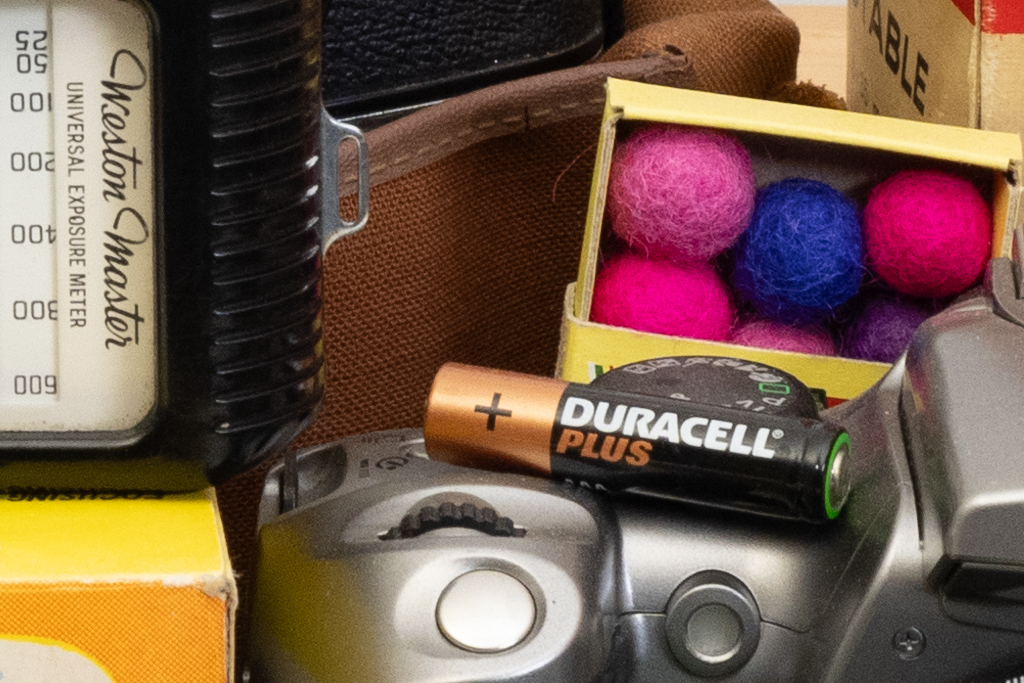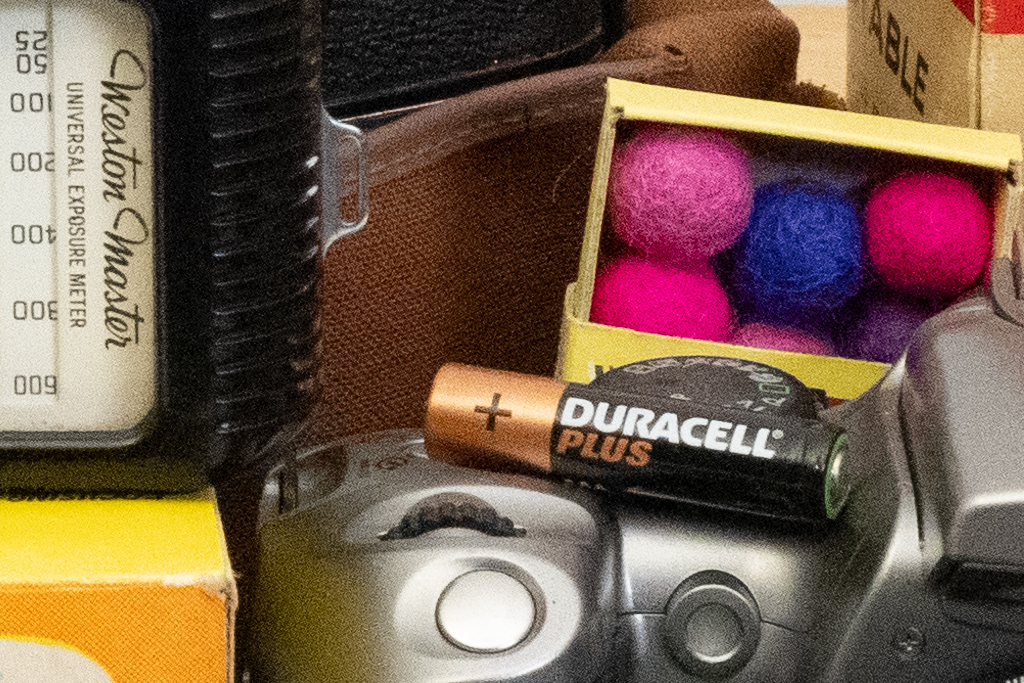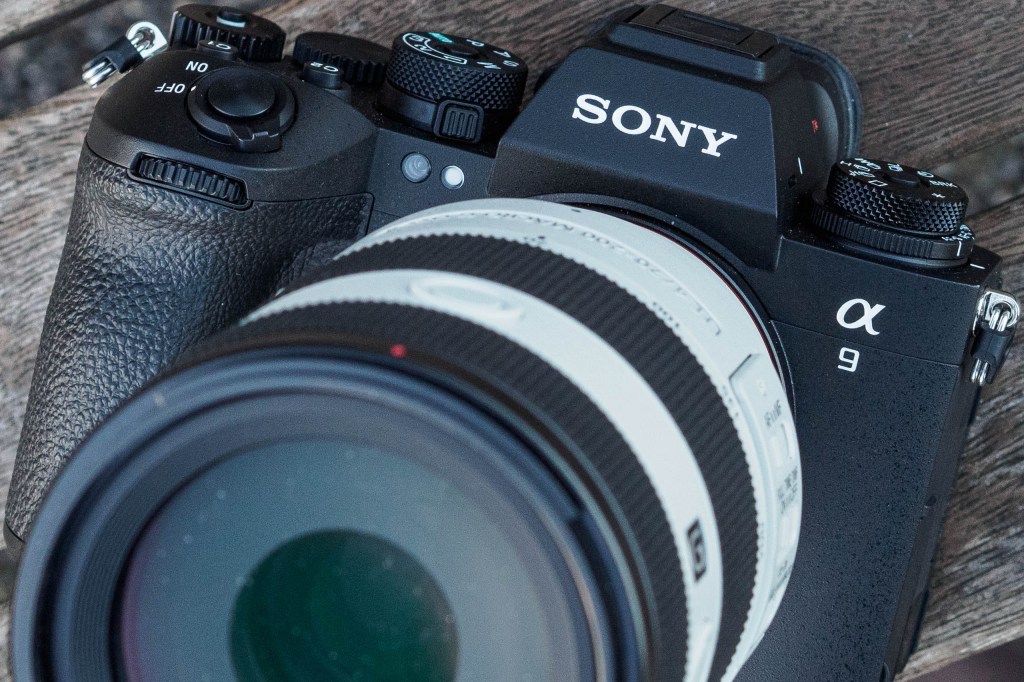Amateur Photographer verdict
The Sony Alpha A9 III’s global-shutter sensor brings amazing speed and unique advantages for sports shooters. However, its image quality lags behind its peers, making it very much a niche product.- Extraordinary autofocus and continuous shooting
- Excellent body design and handling
- No rolling shutter distortion
- No banding under artificial lighting
- Flash sync available at any shutter speed
- Minimum ISO 250 native sensitivity limits ‘best’ image quality
- Relatively poor dynamic range and high-ISO noise performance
- Over-complicated and occasionally incomprehensible menus
Introduction
The Sony Alpha A9 III is the latest in the firm’s line of specialist cameras purpose-designed for professional sports and action photography. Good enough to make our list of the best Sony cameras, for sure. In an eye-catching technological breakthrough, it’s the first full-frame camera with a global shutter sensor.
Technically, this means that the camera is capable of exposing and reading out every single pixel simultaneously. This distinguishes it from other pro sports cameras like the Canon EOS R3 and the Nikon Z9 or Nikon Z8, where the sensor is read out sequentially line-by-line, albeit at extremely high speed. For the A9 III’s target audience, the global shutter is something of a holy grail, as it brings several unique advantages.
Sony Alpha A9 III at a glance:
- $6,000 / £5,200 body-only
- 24.6MP full-frame stacked-CMOS sensor with global shutter
- ISO 250-25,600 (standard)
- 120fps continuous shooting
- 4K 120P video recording
- 9.44m-dot, 0.9x viewfinder
- 3.2in, 2.1m-dot articulated touchscreen
So what benefits does the A9 III’s global shutter sensor bring? In principle, there should be no subject distortion due to rolling shutter, nor any flickering or banding artefacts in artificial light. Flash sync is also available at all shutter speeds, without needing to use a power-sapping high-speed sync mode. Sports photographers should also find it’s immune to a phenomenon where parts of LED advertising boards can appear blacked-out.
These advantages are backed up by astonishing continuous shooting and autofocus specifications, which come courtesy of the sensor’s ‘stacked’ architecture. The camera is capable of 120 frames per second in full-resolution raw, while tracking focus on subjects as they move around the frame, and with no viewfinder blackout. It’ll also record 4K video at 120fps using the full sensor width. Such capability doesn’t come cheap, though; you’ll have to pay $6,000 / £5,200 for the privilege of owning one.

Sony’s original Alpha A9 was undeniably a landmark camera, as it was the first mirrorless model to comprehensively outperform high-end sports DSLRs. Sony certainly wants us to believe the same of the A9 III, describing it as a ‘game-changer’ in its marketing. But while the global shutter may be a godsend for pro photographers shooting the Paris Olympics this summer, what does it mean for the rest of us, and is it a pointer towards how all cameras will work in the future?
Features
Let’s take a closer look at what the A9 III offers. It’s built around a 24.6MP full-frame sensor, which in addition to having a global shutter, employs stacked-CMOS architecture for rapid shooting and data readout. Sony is sufficiently confident in this technology that it’s left out a physical shutter entirely, which means the camera can operate completely silently.

Sports cameras are often used with very fast shutter speeds, and in this respect, the A9 III offers settings as high as 1/80,000sec. This means it narrowly usurps the Canon EOS R3 for the crown of the world’s fastest shutter speed. But there’s a catch; initially that’s only available in single-shot mode, with the top speed limited to 1/16,000sec for continuous shooting. Sony is promising to fix this with a firmware update.
In the first clue that the global shutter is not without its drawbacks, the sensitivity range covers ISO 250 – 25,600 as standard, and ISO 125 – 51,200 extended. This is narrower at both ends than the previous Sony A9 II, which offered ISO 100-51,200 as standard. The lack of an ISO 100 option means that logically, the A9 III won’t be able to deliver images with quite such low noise and high dynamic range as its predecessor in favourable lighting conditions. Meanwhile, the reduced top setting suggests we may see increased noise at high ISOs.

There’s an argument that the ISO 250 lower limit isn’t really a problem, as sports photographers often use very fast shutter speeds, and therefore rarely employ such low ISO settings anyway. However, it could impact their ability to take panning shots at slow shutter speeds without having to fit a neutral density filter.
While the A9 III can shoot at 120fps, Sony has recognised that nobody needs to shoot this fast all the time. So there’s a clever new Continuous Shooting Speed Boost function which allows the camera to be temporarily switched up from a slower speed, simply by holding down a button. This can also be set to slower speeds if you prefer.
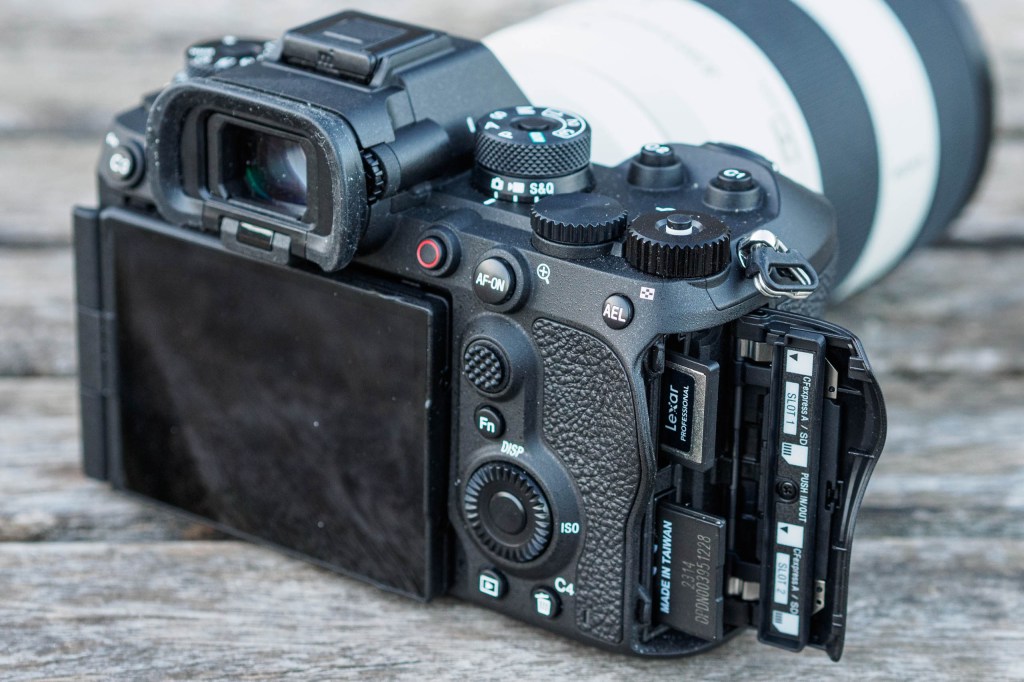
In another new feature for Sony, Pre-Capture is also available. Here, the camera can continuously buffer up to a second’s worth of images when you either hold down the AF-ON button or half-press the shutter, and then record them to card when the shutter button is fully depressed. In principle, this allows you to capture unpredictable action when normally you wouldn’t have time to react.
Sony’s latest subject detection autofocus system is onboard, essentially inherited from the high-resolution Sony Alpha A7R V. As there, it’s powered by its own AI processor, with dual Bionz XR processors handling everything else. The system can recognise and track focus on a wide range of subjects, including people, animals, birds, insects, cars and airplanes. One new feature, at least for a Sony camera, is custom AF areas, that allow the user to specify rectangular zones for autofocus.
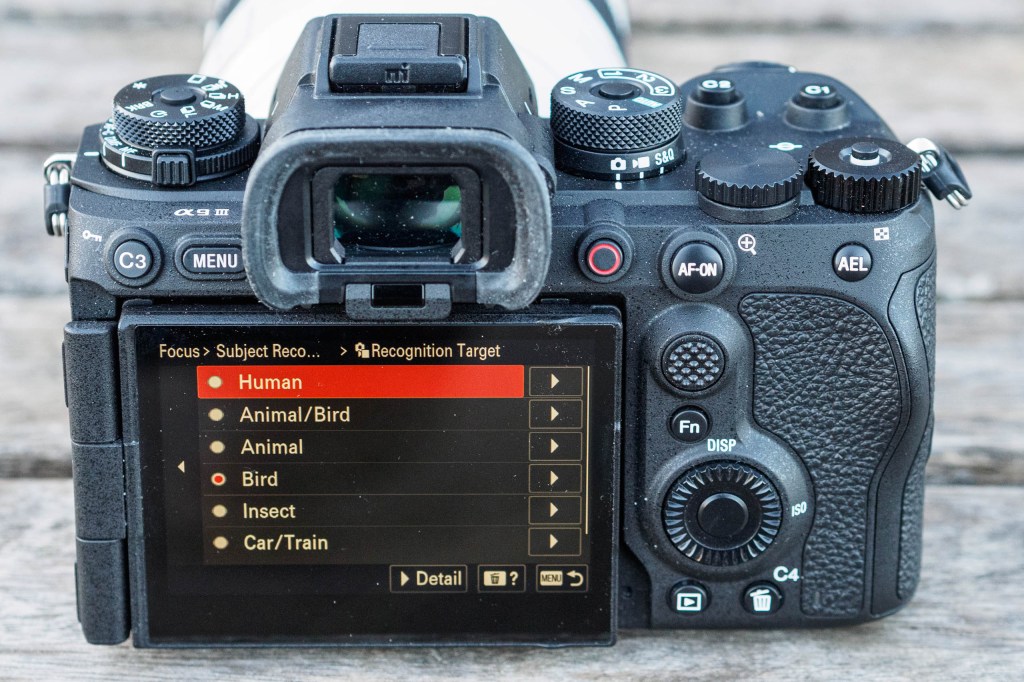
In-body image stabilisation is included, promising an impressive 8.0 EV of shake reduction. You may think this will bring little benefit for sports photography, but it could be handy for those who’d like to convey a sense of motion using long exposures, without recourse to using a tripod.
A new composite RAW shooting setting is available that combines multiple frames to minimise noise. However, the composite file needs to be created on a computer, which is always a pain. The function is also unlikely to work well if the subject moves between frames, which given this camera’s intended purpose, seems quite likely. There’s no high-resolution multi-shot mode.

While the A9 III isn’t especially designed for video, it can still record in 4K at 120fps, with 6K oversampling for maximum quality. This is backed up by 10-bit 4:2:2 colour, with S-Log3 and S-Cinetone support. Sony’s active image stabilisation is also on board to provide smooth hand-held footage.
Pro-spec connectivity is built-in, including an RJ45 ethernet port for sports photographers who need to transmit their shots immediately to a picture desk, plus a super-fast 10Gbps USB-C port. As usual, Bluetooth and Wi-Fi are also on board for connecting to a smartphone via the Sony Creators app. This offers the expected functions, including the ability to control the camera remotely and copy images to your phone for sharing.
Key features
| Power | Sony’s standard NP-FZ100 battery is rated for 400 shots per charge using the EVF and 530 with the LCD. The camera can also be powered via its USB-C port. |
| Connectors | On the side, you’ll find 3.5mm stereo headphone and mic sockets (behind separate covers); USB-C and Sony’s micro-USB ‘multi-connector’ port ; RJ45 ethernet; full-size HDMI; and a PC flash sync port. |
| Storage | There are dual card slots, with each accepting either UHS-II SD cards, or the faster but expensive CFexpress Type A. |
| Flash | Flash sync is available at all shutter speeds up to 1/80,000sec using Sony’s HVL-F60RM2 or HVL-F46RM units, dropping to 1/16,000sec at apertures of f/1.8 or larger. With other units, the top sync speed is 1/500sec |
| Vertical grip | The wider body requires a new vertical grip, the VG-C5, which accepts two batteries and provides a replicate set of shooting controls for £390 |
| Sensor cover | This shutter-like mechanism can be set to close when the camera is switched off, to protect the sensor from dust |
Build and Handling
In terms of design, the A9 III is a relatively compact, single-gripped camera that accepts an optional add-on VG-C5 vertical grip. This stands in contrast to the Nikon Z 9 and Canon EOS R3, both of which include integrated vertical grips that house hefty batteries for extended shooting. There are arguments for and against both approaches, and Sony would say that the removable grip allows you to have a smaller camera when you want it. Ultimately which is ‘better’ comes down to personal preference.
When it comes to the control layout, the camera is very similar to the high-resolution Alpha A7R V, with most of Sony’s latest design tweaks onboard. However, the A9 III boasts additional dials on the top left for continuous shooting and autofocus modes, which are the hallmark of the A9 series and the higher-resolution A1. Existing Sony users should be able to pick it up and use it pretty much straight away.
There are no fewer than four electronic dials for changing settings, with a conventional exposure mode dial on top (which is unusual for a camera of this type). A large AF-ON button is placed above the AF selector joystick, while the video button is tucked away next to the viewfinder, in contrast to other recent Sony models where it’s placed on top. A switch beneath the mode dial selects between stills, video, and quick/slow motion, and you can tell the camera to use entirely separate settings for each.
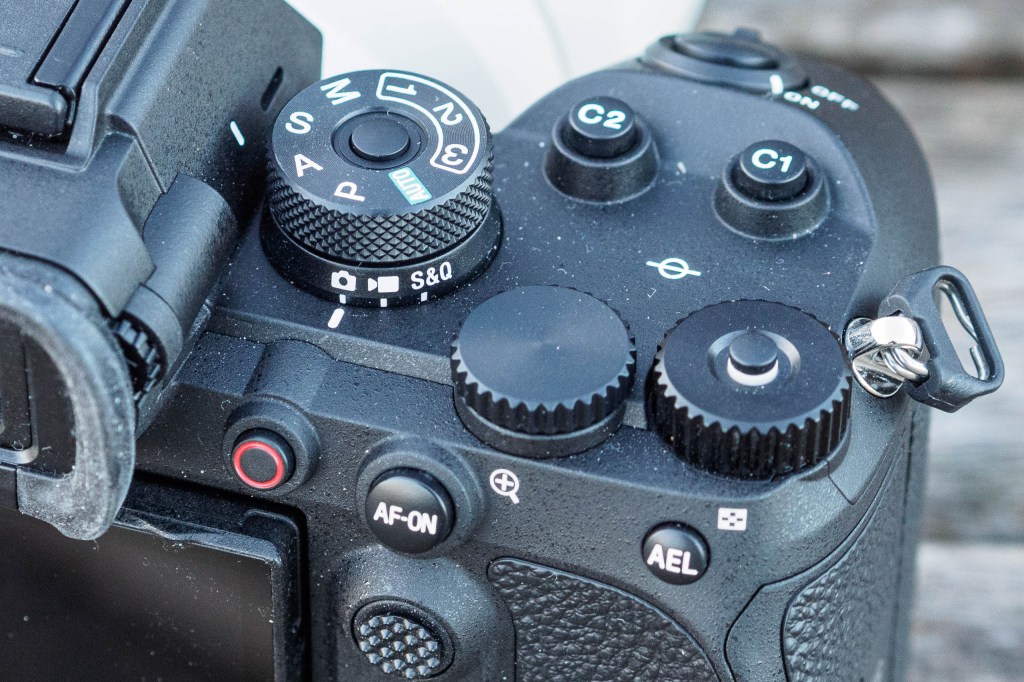
However, there’s rather more to the A9 III than just a lightly reworked A7R V. Sony has clearly been listening to feedback from pro sports photographers, as the handgrip has been reprofiled and moved further away from the lens mount, resulting in a body that’s 7mm wider than the A9 II’s. This makes the new model easier to handle when using large telephoto lenses.
It also creates space for a new C5 function button on the front, which by default engages the 120fps speed boost option. Meanwhile, the two function buttons on top behind the shutter release have been made larger and more positive.
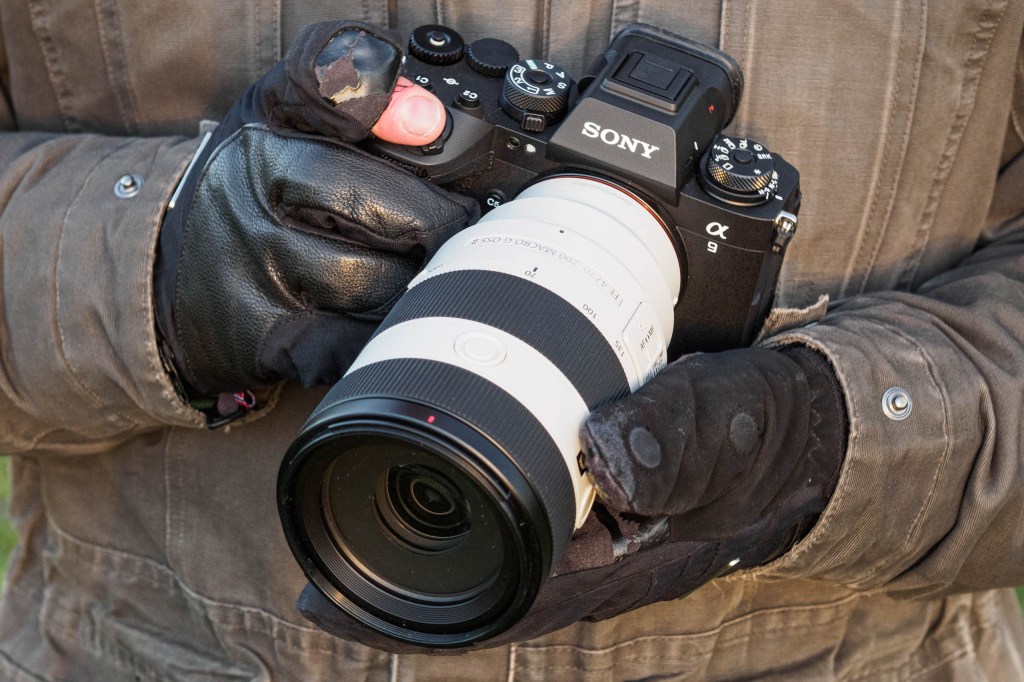
It’s very noticeable how much of an improvement this all makes to the camera’s handling, especially when you’re wearing gloves, which I found very welcome when shooting on some freezing winter days. On previous Sony cameras, your fingers can feel uncomfortably jammed in between the handgrip and the lens, particularly when wearing gloves of any real thickness and warmth. This may sound like a minor point, but many pro sports photographers have no choice but to shoot outdoors in the cold and rain as a matter of course.
In this regard, the only fly in the ointment lies with the locking buttons on the top-plate dials. These have to be held down every time you want to change the drive or exposure mode, but their shallow travel makes them awkward to manipulate in a hurry with gloved hands. Here, Canon and Nikon’s approach of pushing a button and spinning dial arguably still makes more sense for this kind of camera.
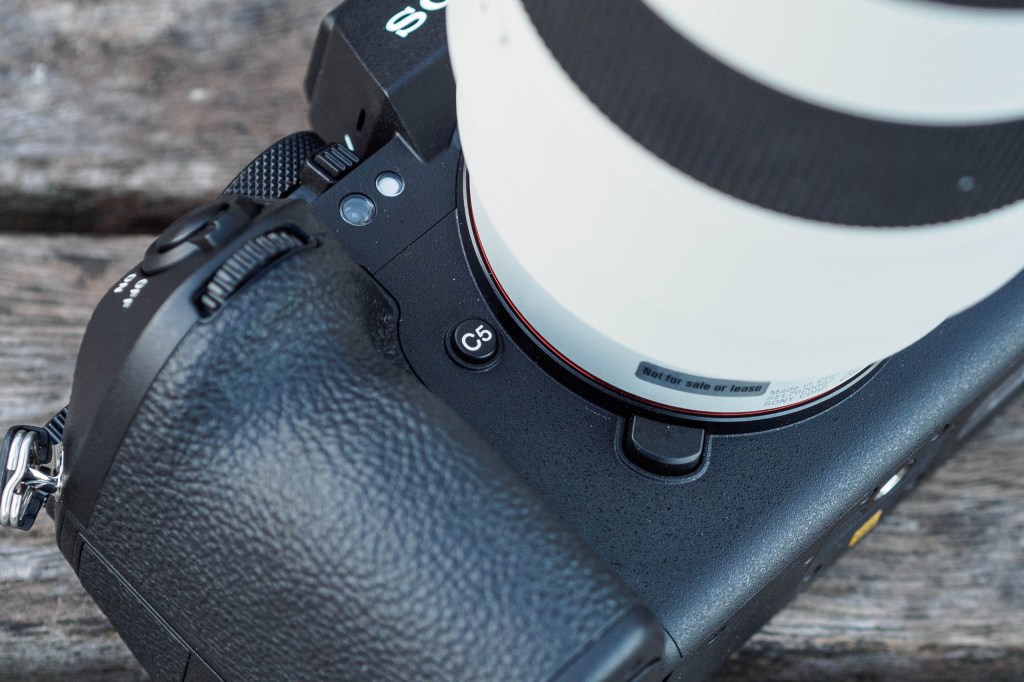
As on other recent Sony models, the A9 III gains a whole new level of touch operation. This works not only with the onscreen Fn menu, but also with a second set of touch buttons that can be called up and dismissed by swiping left or right at the edge of the screen. It’s a nice option to have available for changing secondary settings more quickly.
Customisation
Naturally, a high level of customisation is available. For example, you can remap pretty much every button to whichever function you find most useful, change how the dials behave, and customise the Fn menu. It’s also now much easier to build a custom My Menu of your most used settings, simply by pressing the Delete key when you have the menu item selected.

This is especially welcome, as the menu is vast and suffers from more than its fair share of incomprehensible abbreviations. For example, to change the continuous shooting speed boost when pressing the front button, you first need to work out that the menu item is called ‘Cnt Sht Spd Bst Settings’. It’s staggering that nobody at Sony realised a better abbreviation might just be ‘Speed Boost’.
Similarly, I preferred the camera to draw a frame around subjects recognised by its AF system, and it took a moment for me to discover that I needed to set ‘Subj Recog Frm Disp’ to On. And these are far from the only culprits.
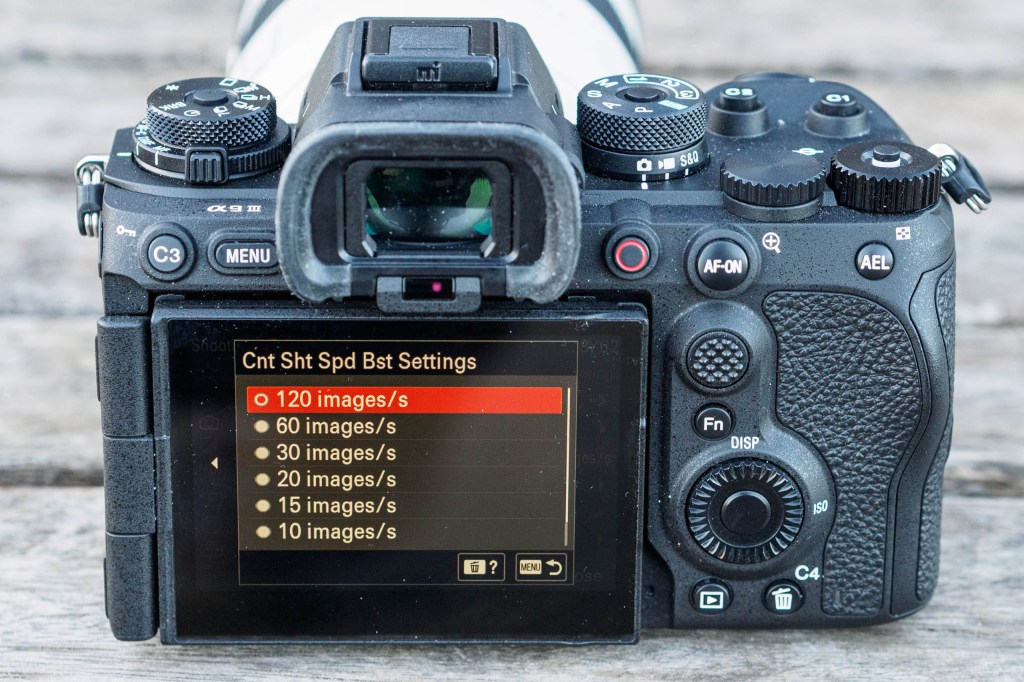
This gripe aside, though, it’s clear that the A9 III is the best-handling camera that Sony has made to date. Especially for those photographers who need to use it outdoors in difficult weather conditions.
Viewfinder and screen
When it comes to composing and viewing your images, the A9 III employs a similar setup to the A7R V. It boasts a huge, detailed 9.44m-dot viewfinder that offers 0.9x magnification, but with a key difference being that it’s entirely blackout-free during continuous shooting. This results in a fantastic viewing experience that none of its competitors can quite match (although to be fair, they’re not far off in practical terms).
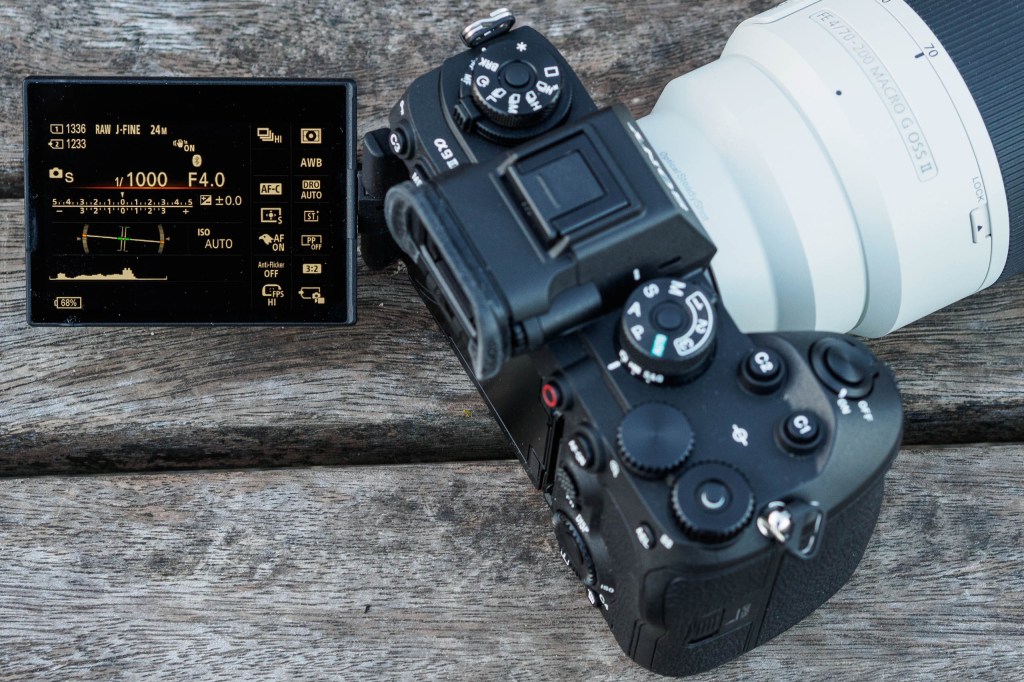
It also uses the same rear screen design as the A7R V. The 3.2in, 2.1m-dot LCD is attached to a side-hinged, fully articulated mechanism that allows it to face in almost any direction; up, down, left, right or even forwards. This is then mounted onto a frame that also enables the screen to be tilted up and down while keeping it behind the camera.
Photographers tend to hold strong preferences between tilting and vari-angle screens, but this offers the best of both worlds. As a result, it’s particularly easy to set up the camera in awkward shooting positions.
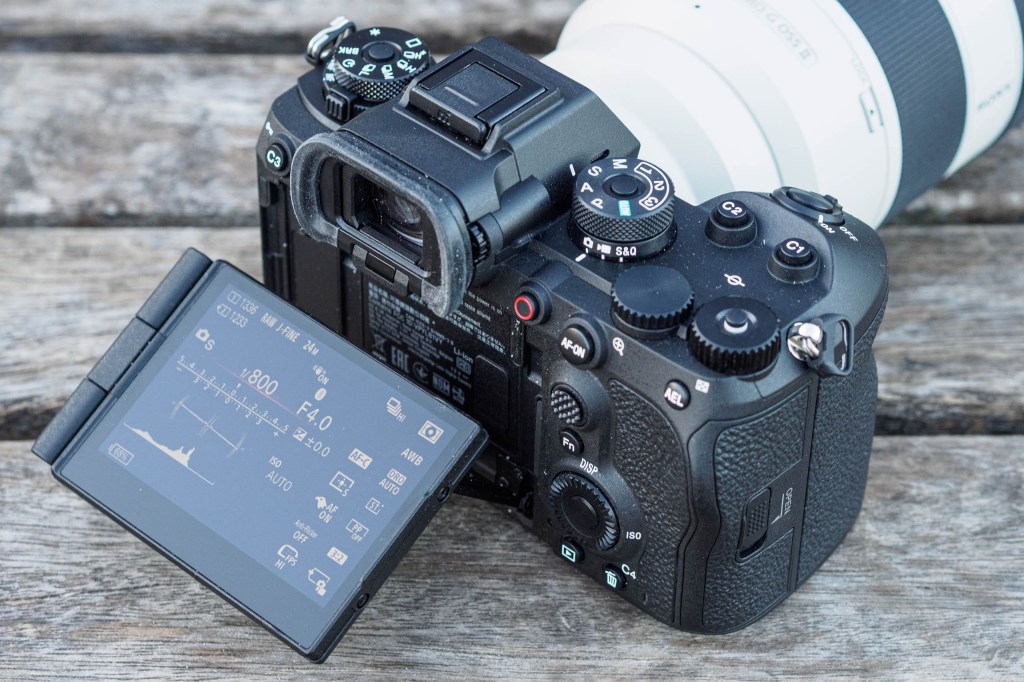
There’s a comprehensive array of viewing aids on hand, too. Sony previews colour, exposure and depth-of-field by default, which means you get a very good idea of how your images are going to turn out. You can also display a small live histogram and electronic levels, although not at the same time. There’s not a lot else you could ask for, really.
Autofocus
We’ve become used Sony’s high-speed cameras bringing class-leading autofocus performance to the table, and the A9 III doesn’t disappoint. I tested it with a range of subjects, including athletes, rally cars, and birds in flight, and found it to be astonishingly fast and reliable. Indeed, among the many thousands of frames I shot with the camera, it’s hard to find many that are out of focus.
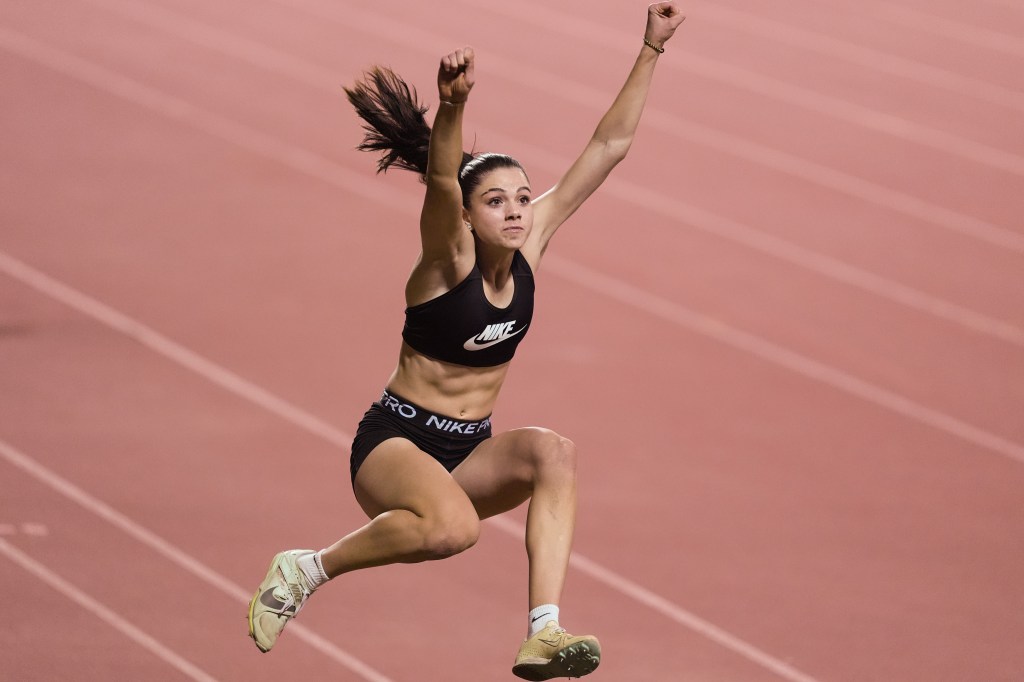
Subject detection works incredibly well, regardless of whether it’s faced by people, vehicles, or animals. It’s impossibly quick, locking onto subjects in an instant, and then following them precisely as they move around the frame. It will also concentrate specifically on the most important part of a subject as it gets larger within the frame.
However, if you use one of the wide area AF modes, Sony doesn’t make it very easy for you to select between multiple subjects that the camera has detected. Instead, it’ll usually concentrate on whichever is largest and closest to the centre of the frame. I found the easiest way to deal with this was to use a smaller AF area to pick up the subject initially.
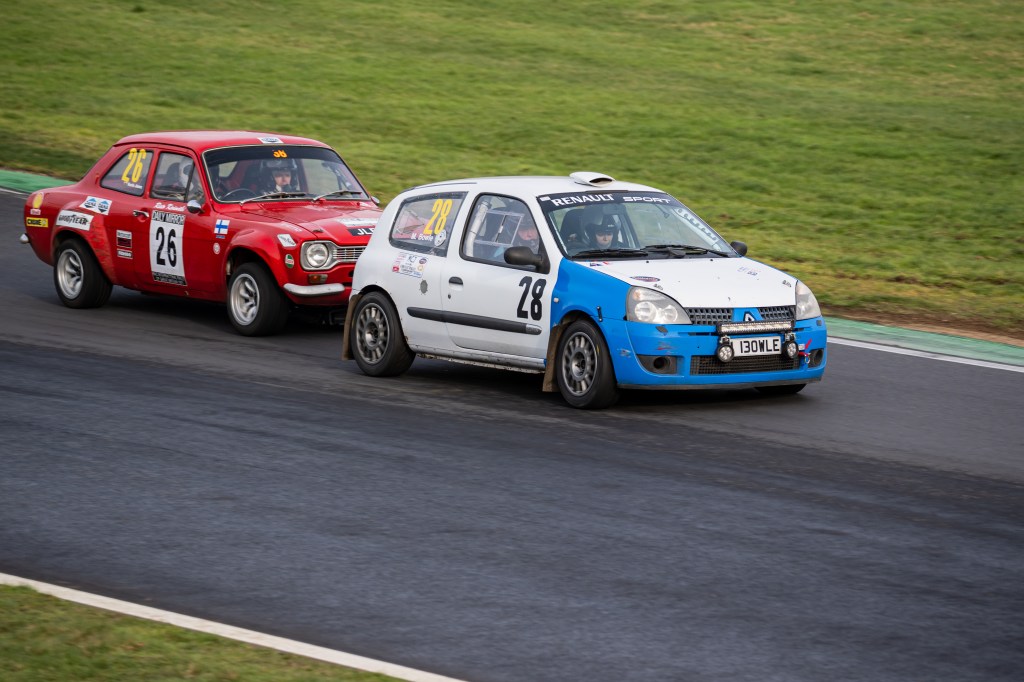
You will also need to use Sony’s own lenses to get AF tracking to work at the very highest frame rates, of 30fps or more. Having said that, I shot both birds in flight and rally cars using the excellent Sigma 100-400mm F6-6.3 DG DN OS telezoom and found the camera still tracked focus effectively in the L and M drive modes (5fps and 15fps, respectively).
I do have a couple of operational gripes, though. Where Canon and Nikon allow you to toggle AF tracking on or off at the touch of a button, Sony forces you to select between a replicate set of AF-area modes instead. This is illogical and slower to use.

Also unlike those big-name competitors, the subject detection has no Auto option, where it can select between the various subject types automatically. I suspect that much of the time, that won’t be a concern for the camera’s target audience. But there are certainly sports where it would be helpful to have the camera recognise people at the same time as cars, motorcycles, or animals.
My overwhelming impression from working with the A9 III, though, is that it’s a camera that will autofocus on pretty much whatever you point it at, no matter where it is in the frame, or how fast it’s moving. You just have to work out how best to configure it for each type of subject you shoot.
Performance
Just as we’d expect from a pro sports camera, in practical use the Sony Alpha A9 III is incredibly quick and responsive. It fires up the moment you flick the power switch, and then reacts instantly to all the controls. Its shutter button requires only the lightest of touches before focusing and firing off a burst of frames, but that’s no bad thing here.

With no mechanical shutter, the A9 III is inherently silent in operation. That’s great for many situations when you need to be discreet, but there are times when you could do with audible feedback that you’re actually shooting, especially in single-shot mode. Here the camera can play fake shutter sounds, and Sony has assigned this onto an external button (C3) so you can easily change it from loud, through quiet, to muted. I must admit I couldn’t understand this decision when I first got the camera, but it really does make sense.
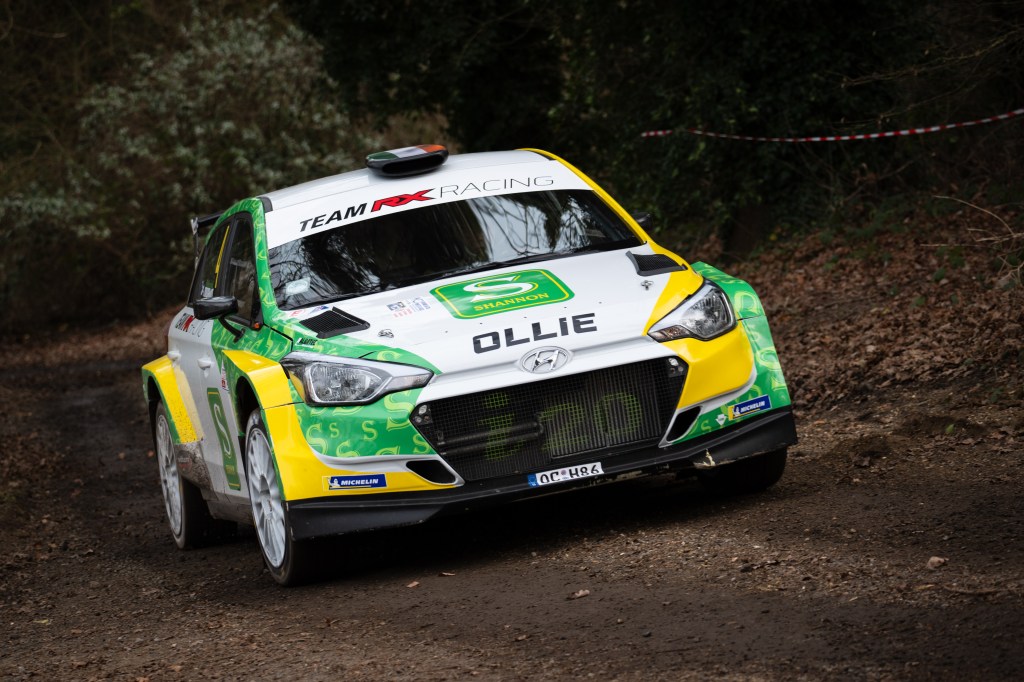
Battery life is highly dependent upon how you shoot. The CIPA-standard figures don’t look much for a camera that can shoot at 120fps, at 400 shots per charge using the EVF, and 530 with the LCD. But these only apply when you’re shooting single frames at a time, not with bursts. In reality, I was able to shoot the best part of 2000 frames on a single battery with plenty to spare. With the vertical grip and pair of full batteries, that increased to well over 4000 frames.
Continuous shooting and buffer
As for the continuous shooting performance, suffice to say that this is a camera that’ll shoot faster than you’ll normally ever need, for longer than you’ll normally ever need. In my tests, it maintained its headline 120fps speed for at least 190 frames when shooting compressed raw, before throttling back to a mere 30fps or so. Drop back to a far-from-pedestrian 15fps, and it’ll keep on shooting for about 400 frames.

You don’t necessarily need to use a CFexpress card to benefit from its sheer speed, either. Instead, the main advantage of the faster media lies in how rapidly the camera can clear buffered frames to the card. For a 200-frame burst, this takes about 10 seconds with CFexpress, but 30 seconds with even the fastest UHS-II SD cards. Pro users will surely invest in CFexpress, but it’s good to know you can fall back on SD cards too.
Auto white balance and colour
I found Sony’s metering and auto white balance systems to be very reliable on the A9 III – perhaps more so than on the firm’s other recent cameras. It generally does a good job of avoiding losing highlight detail, without underexposing and blocking up shadows. One thing I did notice, though, is that when playing back your images on the LCD, it often looks as though highlights are clipping in a rather ugly fashion, yet the files look much better on a computer. This can tempt you to apply unnecessary exposure compensation.

Shooting in daylight, you’ll get natural-looking colours, that err more towards realism than making punchy-looking JPEGs. But that’s probably not a bad thing on a camera that’s tilted mainly towards photojournalism. You can always boost the warmth, vibrance and contrast later if you wish.

Under artificial lighting, though, things are more complicated. You won’t see colour banding on any individual image, but you can certainly get colour variations between frames due to the flickering effect of the lighting. This can result in some frames with rather unattractive colour if you’re using a preset or manual white balance.
Raw image quality
When it comes to examining the raw image quality, though, we really see the compromises Sony has made in building this astonishing camera. The global shutter sensor works by using two photodiodes per pixel, with one recording light and the other being used to store the signal temporarily, prior to it being read out. As a result, each pixel is limited in terms of the amount of light it can capture. The upshot is that it simply can’t match its 24MP full-frame peers, such as the Nikon Z f or the Panasonic Lumix S5 II, in terms of dynamic range and high-ISO noise.
In practice, this means that at its highest standard ISO settings, particularly ISO 12,800 and ISO 25,600, the A9 III’s files end up just that bit lacking in detail and colour compared to its peers. However, that doesn’t mean those images are unusable. And while ISO 51,200 raw files look pretty bad when viewed in Adobe Camera Raw, Sony’s in-camera processing does a surprisingly good job of cleaning up the JPEGs.

Probably the biggest drawback comes with respect to dynamic range, and in particular, the ability to recover extra shadow details from raw files. Things aren’t too bad at ISO 250; I shot a couple of sunrise landscapes, and was able to convincingly bring up as much extra detail as I needed. But the moment you try to bring out extra shadow detail in files shot at higher settings, you’ll find there’s just not very much on offer before noise becomes intrusive.

It’s important to acknowledge that for much of the A9 III’s target audience, these image quality compromises will be an entirely acceptable trade-off for its unique superpowers. But they do mean that it’s very much a specialist product that makes little sense outside of its own particular niche.
ISO and Noise
While the A9 III’s base sensitivity may be relatively high at ISO 250, it can still deliver decent image quality. There’s every bit as much detail as we’d expect from a 24MP sensor, and barely any visible noise. Dropping to ISO 125 gives even cleaner images, but risks losing highlight detail.
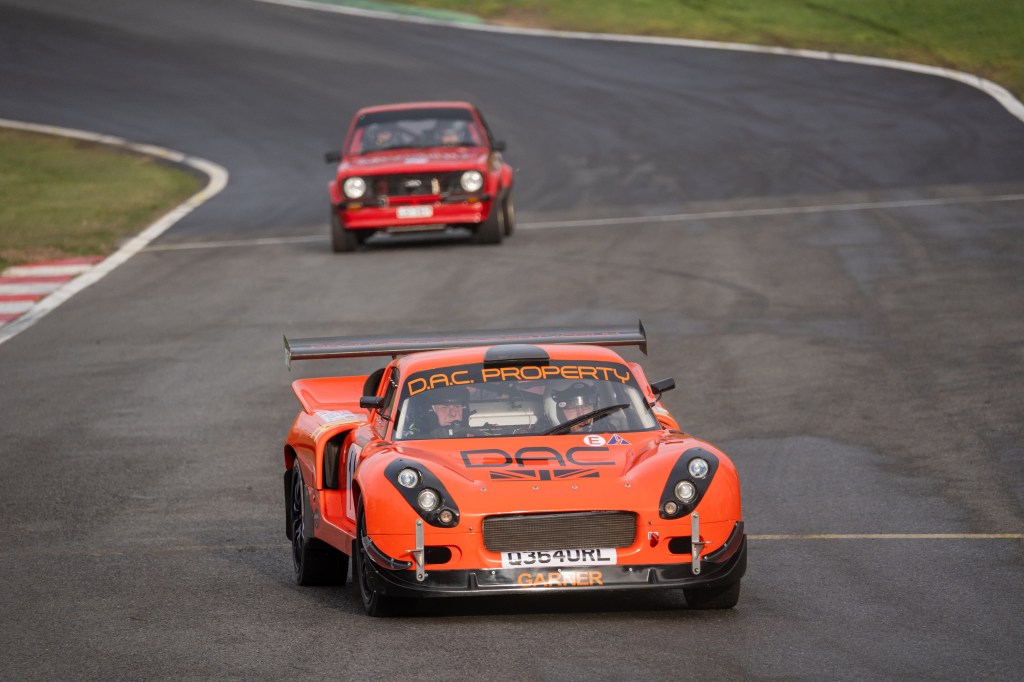
As usual for a full-frame camera, there’s little degradation in quality on stepping up to ISO 1600, but beyond this, noise becomes increasingly destructive. Almost all fine detail blurs away by ISO 6400, while shadow detail takes a serious hit at ISO 12,800. The top standard setting of ISO 25,600 looks very rough when examined on-screen, but images are still usable at smaller sizes. However, ISO 51,200 should probably be avoided.
Below are 100% crops from our standard studio scene at each ISO setting. Click through the slide show to see how they compare.
Our Verdict
After a couple of weeks shooting with the Sony Alpha A9 III, it’s impossible not to be hugely impressed. It’s ridiculously fast, even in full-resolution raw, and the autofocus system is incredible. The global shutter sensor brings real benefits, some of which are unique, most obviously the guarantee of no colour banding under artificial light, and the ability to use flash at any shutter speed. However others are more marginal compared to cameras with stacked sensors, which in reality aren’t greatly troubled by rolling shutter distortion anyway.
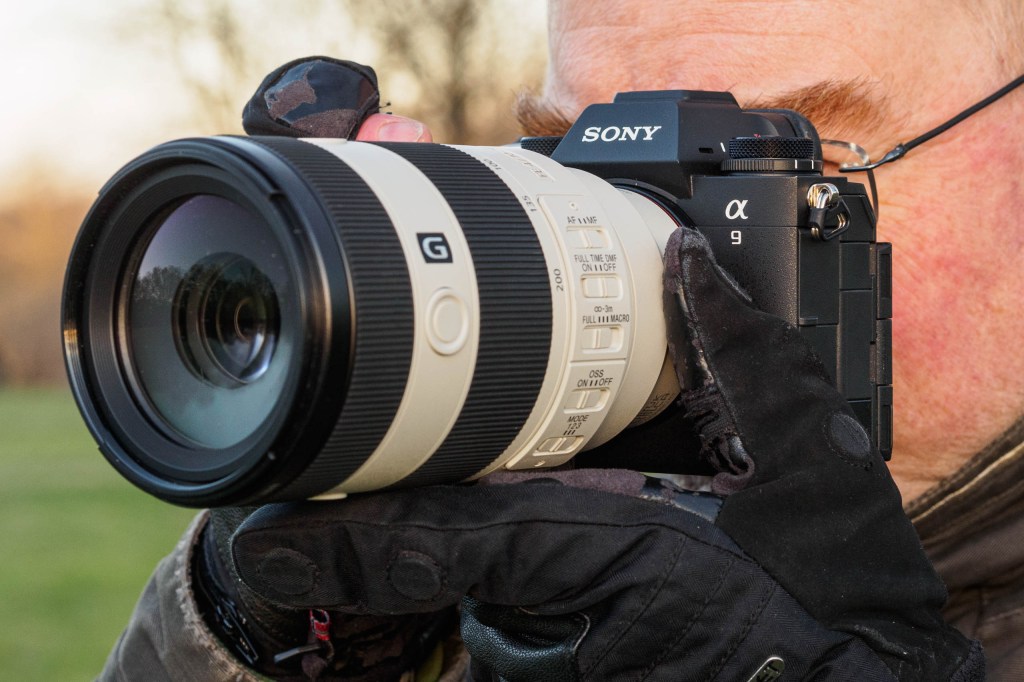
We shouldn’t overlook the updated body design, either. Compared to previous Sony models, the A9 III is easier to use when you’re wearing gloves, thanks to its wider body, remodelled grip, and more positive buttons. For those who often have to shoot outdoors in the cold and rain, that’s a welcome gain. There are still some annoying flaws with the user interface and menus, but that’s true of most cameras.
Unfortunately, though, we can’t ignore the image-quality hit that users must accept in exchange for the A9 III’s very real superpowers. In terms of resolution, dynamic range, and high-ISO noise, it demonstrably lags behind its peers with more-conventional stacked sensors. That probably won’t matter much to its target audience in real-world use, but it limits the camera’s suitability for other purposes. It also means that we’re unlikely to see global shutters appearing in consumer cameras any time soon – in general, the image quality trade-off won’t make much sense for the somewhat niche benefits.
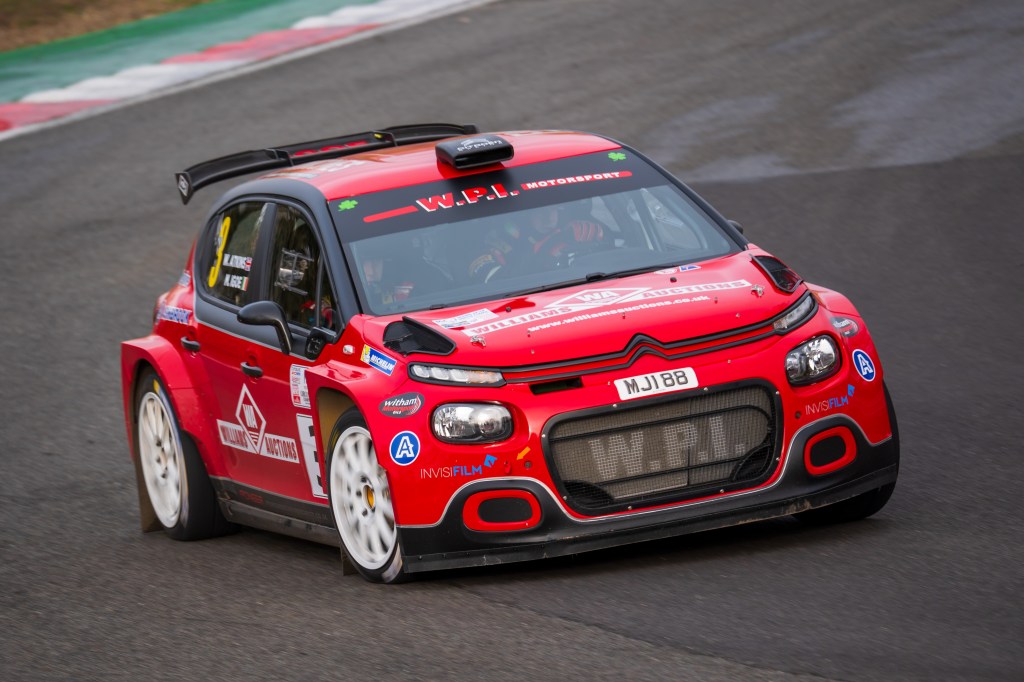
What this all means is that, once you get the past the ‘wow’ factor of the global shutter, and take into account its price, the A9 III is distinctly a niche product. If you want a pro-spec camera in a single-grip body, it’s impossible not to conclude that the Nikon Z8 is a much better all-rounder at a considerably lower price. However for those who make their living from shooting sports, the Sony A9 III is an incredibly accomplished and compelling option.

Follow AP on Facebook, X, Instagram, YouTube, and TikTok.
Sony Alpha A9 III: Full Specifications
| Sensor | 24.6MP CMOS, 35.6 x 23.8mm |
| Output size | 6000 x 4000 |
| Focal length magnification | 1x |
| Lens mount | Sony E |
| Shutter speeds | 1/80,000sec to 1sec |
| Sensitivity | ISO 250-25,600 (standard), ISO 125-51,200 (expanded) |
| Exposure modes | PASM |
| Metering | Multi, centre-weighted, spot, average, highlight |
| Exposure comp | +/-5EV in 0.3EV steps |
| Continuous shooting | 120fps |
| Screen | 3.2in, 2.1m-dot articulated touchscreen |
| Viewfinder | 9.44m-dot, 0.9x magnification |
| AF points | 759 |
| Video | 4K 120P, Full HD 120P |
| External mic | 3.5mm stereo, MI shoe |
| Memory card | 2x CFexpress Type A / UHS-II SD |
| Power | NP-FZ100 Li-ion |
| Battery life | 400 (EVF), 530 (LCD) |
| Dimensions | 136.1 x 96.9 x 82.9 mm |
| Weight | 702g inc battery |




